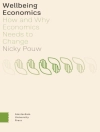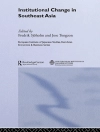This volume helps readers understand the intuitive logic behind logistic regression through nontechnical language and simple examples. The Second Edition presents results from several statistical packages to help interpret the meaning of logistic regression coefficients, presents more detail on variations in logistic regression for multicategory outcomes, and describes some potential problems in interpreting logistic regression coefficients. A companion website includes the three data sets and Stata, SPSS, and R commands needed to reproduce all the tables and figures in the book. Finally, the Appendix reviews the meaning of logarithms, and helps readers understand the use of logarithms in logistic regression as well as in other types of models.
Cuprins
Series Editor’s Introduction
Preface
Acknowledgments
About the Author
Chapter 1: The Logic of Logistic Regression
Regression With a Binary Dependent Variable
Transforming Probabilities Into Logits
Linearizing the Nonlinear
Summary
Chapter 2: Interpreting Logistic Regression Coefficients
Logged Odds
Odds
Probabilities
Standardized Coefficients
Group and Model Comparisons of Logistic Regression Coefficients
Summary
Chapter 3: Estimation and Model Fit
Maximum Likelihood Estimation
Tests of Significance Using Log Likelihood Values
Model Goodness of Fit
Summary
Chapter 4: Probit Analysis
Another Way to Linearize the Nonlinear
The Probit Transformation
Interpretation
Maximum Likelihood Estimation
Summary
Chapter 5: Ordinal and Multinomial Logistic Regression
Ordinal Logistic Regression
Multinomial Logistic Regression
Summary
Notes
Appendix: Logarithms
The Logic of Logarithms
Properties of Logarithms
Natural Logarithms
Summary
References
Index
Despre autor
FRED C. PAMPEL is Research Professor of Sociology and a Research Associate in the Population Program at the University of Colorado Boulder. He received a Ph.D. in sociology from the University of Illinois, Champaign-Urbana, in 1977, and has previously taught at the University of Iowa, University of North Carolina, and Florida State University. His research focuses on socioeconomic disparities in health behaviors, smoking in particular, and on the experimental and quasi-experimental methods for evaluation of social programs for youth. He is the author of several books on population aging, cohort change, and public policy, and his work has appeared in the American Sociological Review, the American Journal of Sociology, Demography, Social Forces, and the European Sociological Review.












